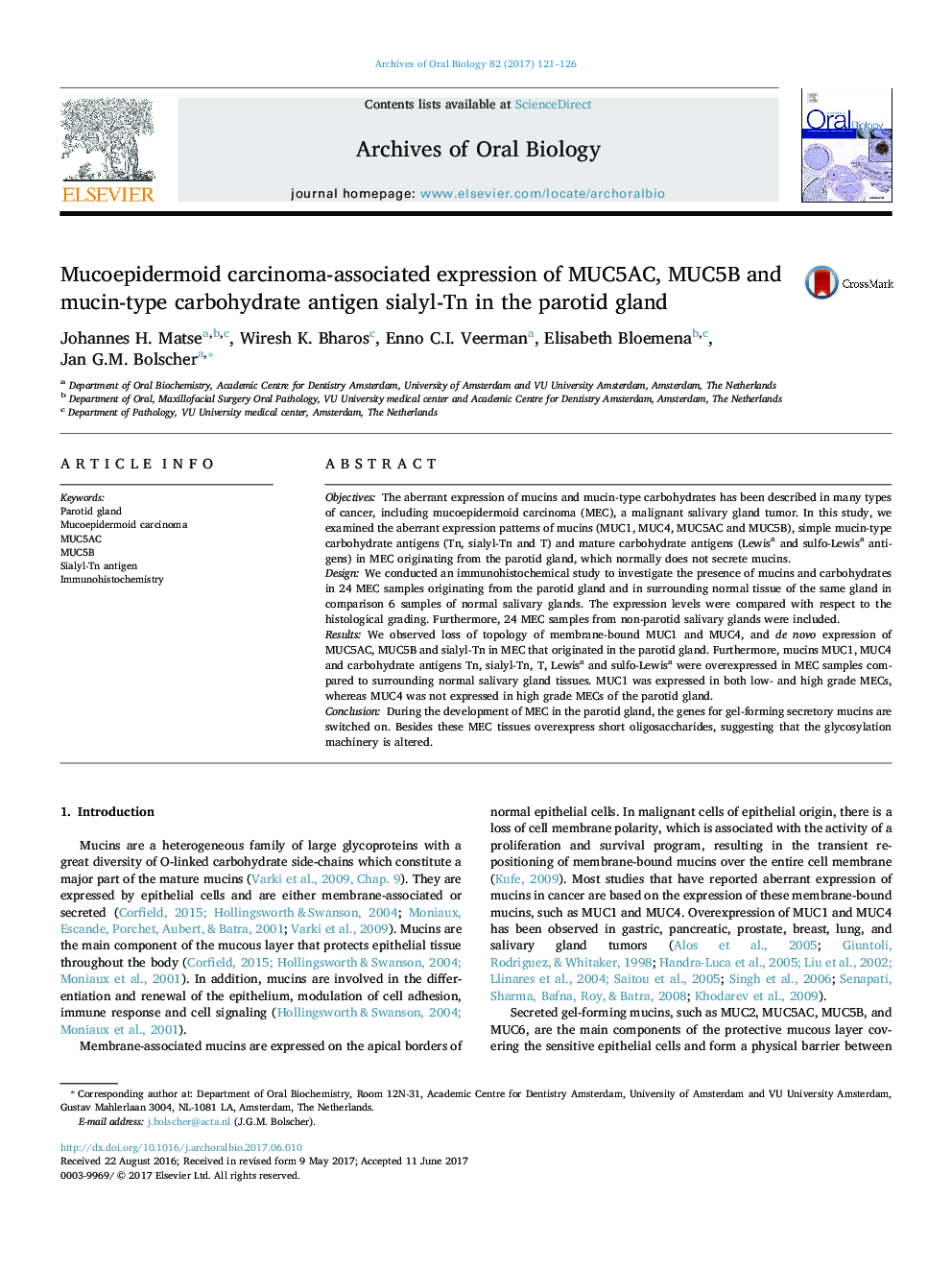| کد مقاله | کد نشریه | سال انتشار | مقاله انگلیسی | نسخه تمام متن |
|---|---|---|---|---|
| 5637912 | 1583271 | 2017 | 6 صفحه PDF | دانلود رایگان |

- Membrane-associated mucins MUC1 and MUC4 are relocated in parotid gland MEC tissue.
- De novo expression of the gastric mucin MUC5AC in parotid gland MEC tissue.
- De novo expression of the salivary mucin MUC5B in parotid gland MEC tissue.
- De novo expression of mucin-type carbohydrate sialyl-Tn in parotid gland MEC tissue.
ObjectivesThe aberrant expression of mucins and mucin-type carbohydrates has been described in many types of cancer, including mucoepidermoid carcinoma (MEC), a malignant salivary gland tumor. In this study, we examined the aberrant expression patterns of mucins (MUC1, MUC4, MUC5AC and MUC5B), simple mucin-type carbohydrate antigens (Tn, sialyl-Tn and T) and mature carbohydrate antigens (Lewisa and sulfo-Lewisa antigens) in MEC originating from the parotid gland, which normally does not secrete mucins.DesignWe conducted an immunohistochemical study to investigate the presence of mucins and carbohydrates in 24 MEC samples originating from the parotid gland and in surrounding normal tissue of the same gland in comparison 6 samples of normal salivary glands. The expression levels were compared with respect to the histological grading. Furthermore, 24 MEC samples from non-parotid salivary glands were included.ResultsWe observed loss of topology of membrane-bound MUC1 and MUC4, and de novo expression of MUC5AC, MUC5B and sialyl-Tn in MEC that originated in the parotid gland. Furthermore, mucins MUC1, MUC4 and carbohydrate antigens Tn, sialyl-Tn, T, Lewisa and sulfo-Lewisa were overexpressed in MEC samples compared to surrounding normal salivary gland tissues. MUC1 was expressed in both low- and high grade MECs, whereas MUC4 was not expressed in high grade MECs of the parotid gland.ConclusionDuring the development of MEC in the parotid gland, the genes for gel-forming secretory mucins are switched on. Besides these MEC tissues overexpress short oligosaccharides, suggesting that the glycosylation machinery is altered.
Journal: Archives of Oral Biology - Volume 82, October 2017, Pages 121-126